
Find out how much tax you’ll get back on your pension contributions.
Your contribution
Yearly income
Live in Scotland?
Claim back via a Self Assessment tax return.
It’s easier than you might think! All you need to do is complete a Self Assessment tax return at the end of the tax year (April 6th to April 5th the following year).
A Self Assessment tax return works out how much tax you should have paid on your income, and when you add your pension contributions, it will work out how much tax you’re due back.
You can then get the cash refunded straight back into your bank account.
You can complete your Self Assessment tax return yourself, or an accountant can do it for you.
For a quick, easy and low cost option, check out 5* rated TaxScouts¹.

To help you save more for retirement, adding money to a pension is tax-free!
If you pay into a pension with work, your money goes directly into your pension pot before tax is paid on your salary (making it tax-free).
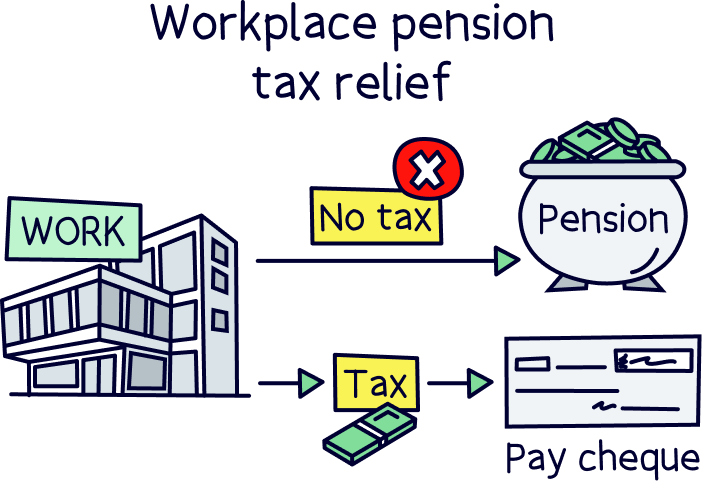
However with a personal pension (one you set up yourself), it works a bit differently…
With personal pension contributions, you’ll already have paid tax on your income (or will do if you are self-employed), and so the government gives you the tax back, simply called tax relief.
For any tax paid at 20% (basic rate tax), on income between £12,571 and £50,270, this 20% is added straight back into your pension pot when you add money to your pension, and works out as a 25% ‘bonus’ on anything you save.
Note: if you earn less than £12,570, you’ll still get the 20% tax relief.
It’s all handled automatically between your pension provider and the government, and will simply turn up in your pension pot after a few weeks. This is called ‘tax relief at source’.
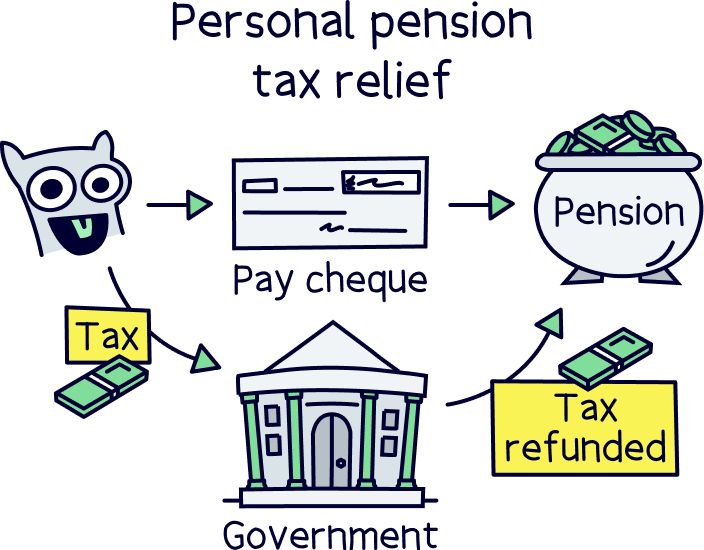
If you’re a higher rate taxpayer (earning between £50,271 and £125,140), you’ll pay 40% tax on some of your income…
You’ll still get the bonus added to your pension when you add money (so 20% tax refunded), and to make up the difference, you can claim the remaining 20% back by submitting a Self Assessment tax return to the government (HMRC) at the end of the tax year, and they’ll give you the money back.
This is the same for additional rate taxpayers, paying 45% tax and earning above £125,140.
Here’s the tax rates we’ve used for the calculator, which is accurate for the current tax year.
If you’re paying Income Tax in Scotland, here’s the tax rates we’ve used, which are accurate for the current tax year.
There is a limit to be aware of when it comes to pensions – each tax year you can only save up to your annual income, or £60,000, whichever is lower.
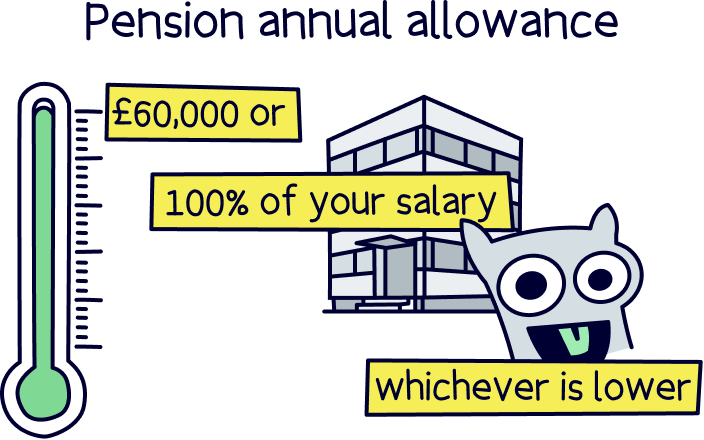
Although you are able to use the last 3 years worth of allowance if you have it spare. You’ll need to have a pension open during those years, and you can only save up to your total income this year (e.g. if you earn £100,000 this year, you can use £60,000 from this year and £40,000 from last year). This is called the pension carry forward rule.
If you’re not working, or don’t have an income, your annual allowance is £3,600. Which includes tax relief – so if you pay in the maximum of £2,880 into your pension, you’ll end up with £3,600 after the government adds the 25% bonus.
If you are self-employed, have your own limited company, and if you make contributions directly from your limited company, there is no income limit, and you can save up to £60,000 per year.
Learn more with our guide to pensions for limited company directors, and plan your retirement yourself with our self-employed pension calculator.
Yep, most people will be eligible for tax relief on their pension.
As long as you’re under 75 years old and a UK resident you’ll qualify for tax relief (and of course have an income to get tax relief on).
If you’re not a current resident in the UK, but have been in the last 5 years, you might still qualify, if you had a pension open at that time.
And if you have a spouse or civil partner with earnings from overseas Crown employment (subject to UK tax), you are eligible for tax relief.
Technically speaking, you need to be a ‘relevant UK individual’.
Pensions are really amazing to help you save for retirement – all that tax relief can really add up and boost your pension pot over time. In addition to saving regularly of course (if you can!).
Saving into a personal pension (a pension you set up yourself) means you’ll get a 25% bonus from the government added automatically, and if you pay 40% or 45% tax, you can claim it back from your pension contributions on a Self Assessment tax return. That’s a lot of free cash.
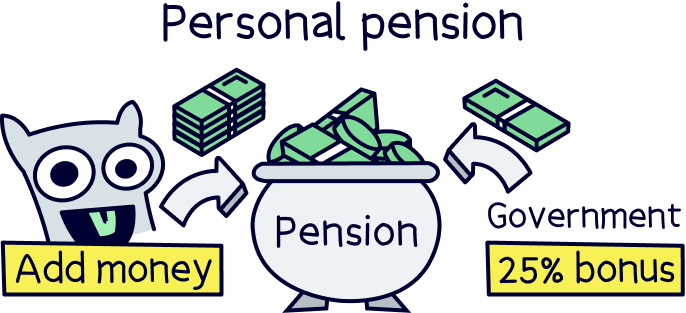
Personal pensions are a really great addition to boost your total pension pot, in addition to a workplace pension (if you’re employed), or as your only option if you’re self-employed (but a great option).
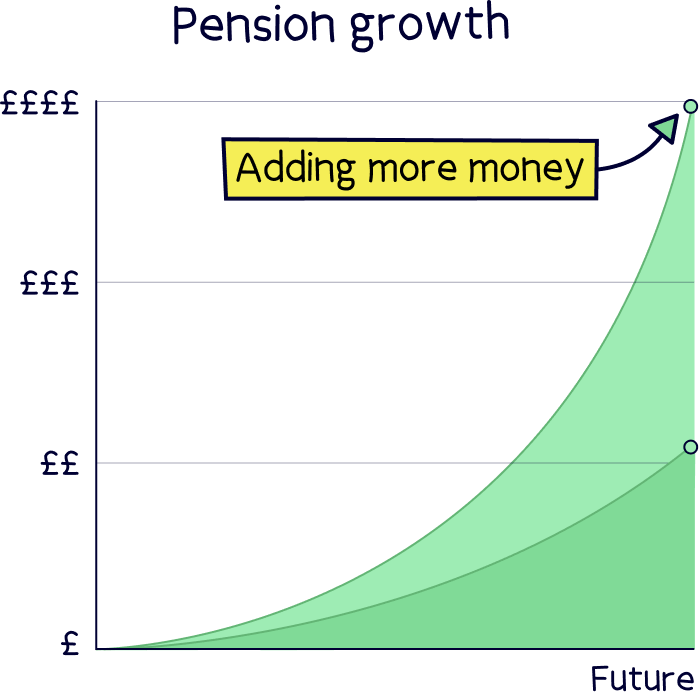
These days we’ll need a very large pension pot in order to afford a comfortable retirement – use our pension calculator to plan how much you might need for your retirement (it’s easy to use).
And if you’re keen to get saving into a personal pension, our top pick is PensionBee¹, it’s easy to use, has low fees and a great record of growing pensions over time. Plus, you’ll get £50 added to your pension for free with Nuts About Money.
For all the top options, check out all the best pension providers.
Happy saving!
Use our pension calculator to plan your retirement savings and get on track – it’s easy to use and takes less than a minute.
PensionBee will contribute £50 to your pension when you open a PensionBee account.